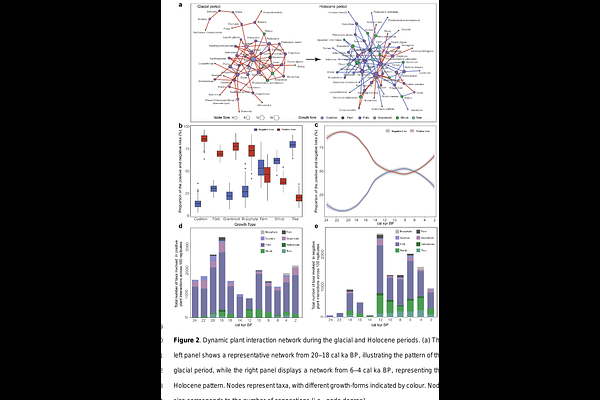Woody plant encroachment enhances negative interactions in Arctic plant communities over the last 24,000 years

Woody plant encroachment enhances negative interactions in Arctic plant communities over the last 24,000 years
Liu, Y.; Jia, W.; Liu, S.; Lisovski, S.; Stoof-Leichsenring, K. R.; Farkas, L. Z.; Herzschuh, U.
AbstractWoody taxa encroachment in the Arctic has been widely observed. However, it remains uncertain how plant interactions are affected by such encroachment due to the lack of long-term observational data. Here, we reconstruct plant composition and functional trait turnover during post-glacial woody encroachment using sedimentary ancient DNA from nine lakes in the Siberia-Alaska region. Environmentally constrained null models are applied to partition plant interactions from the pure environment driven plant co-occurrence signal. Our results show that plant interactions shifted from predominantly positive interactions (e.g. nurse-plant facilitation) during the glacial period to negative interactions (e.g. competition) during the Holocene. This shift coincided with a community transition from herbaceous to woody taxa, leading to an increase in average plant height and root length, as evidenced by leveraging plant trait information. We suggest that climate (an external factor) and plant interactions (an internal process) jointly supported rapid and widespread woody taxa expansion at the end of the last glacial, which may provide an analogy with contemporary \"arctic greening\". In turn, woody encroachment is likely to constrain the geographical ranges of native species, increasing the risk of local native taxa loss, while enhancing beta diversity.